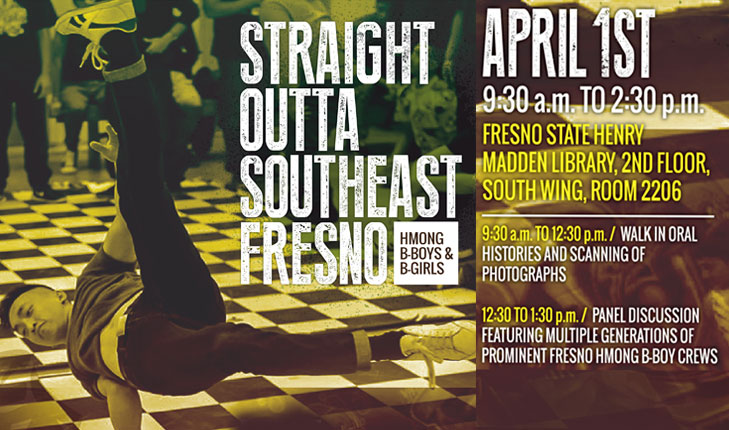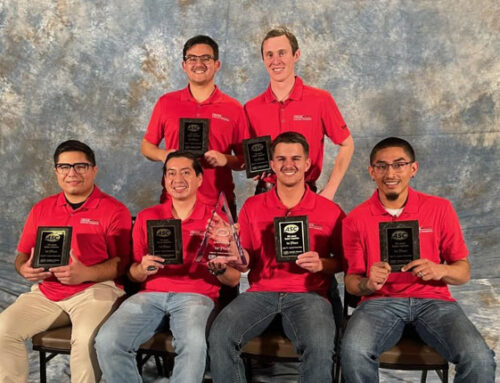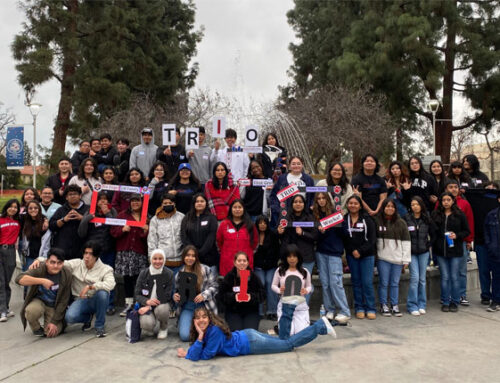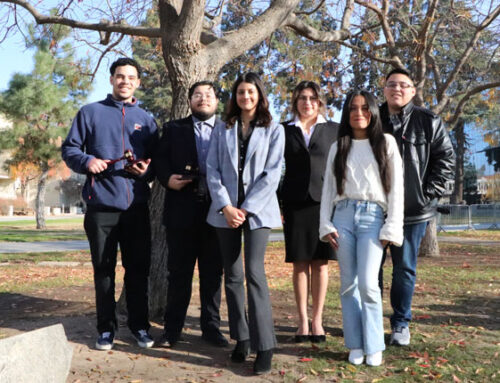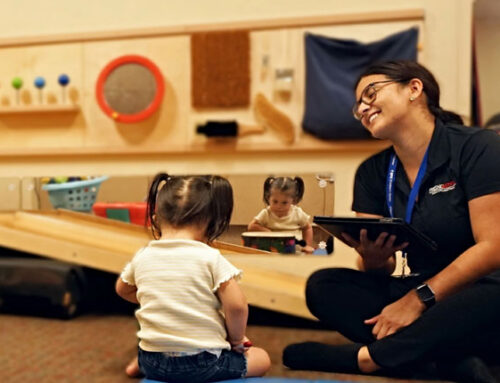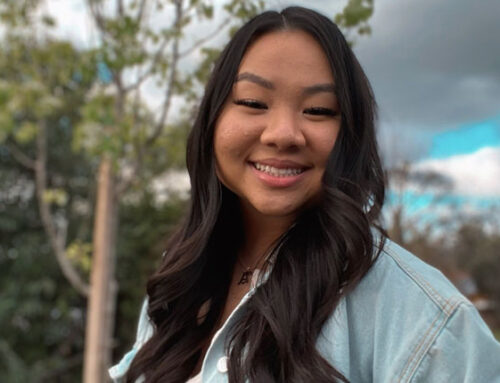A series of projects designed to bring history alive and build relationships between the University and the community continues at Fresno State with the presentation, “Straight Outta Southeast Fresno Hmong B-Boys and B-Girls,” from 9:30 a.m. to 2:30 p.m. Saturday, April 1, at the Henry Madden Library (Room 2206).
“Straight Outta Southeast Fresno” is an effort to document the history of Hmong B-boys and B-girls in Fresno, said Dr. Romeo Guzman, history professor and founder of the Valley Public History Initiative that launched in the fall and is chronicling local cultural history.
Guzman encourages anyone who participated in the Hmong B-boy and B-girl scene (commonly involving forms of breakdancing) to attend the free, public event where, from 9:30 a.m. to 12:30 p.m., Fresno State historians and students will be taking walk-in oral histories and digitizing photos.
A panel led by historian Sean Slusser, who is collaborating with Guzman on the project, with B-boys Ville Thao, Yoshi Yang and Gary Yang starts at 1:30 p.m. They will discuss their participation in the 1990s Fresno B-boy and B-girl culture and the ways participation was shaped by their experiences in the local Hmong community.
The panel will be followed by lunch and a dance competition culminating with gift card prizes from 1:30 to 2:30 p.m. in the quad behind the Social Science building (Campus Drive and San Ramon Avenue).
Starting in the 1990s, Southeast Fresno emerged as an important node in the larger Fresno hip-hop dance network, Slusser explains.
Talented B-boys and B-girls within the area’s Hmong population gathered in local spaces like Holmes playground, Roeding Park and the Mosqueda Center. Hmong youth formed crews like Bumz, Smurfs, DIS and Wizards to hone their dancing skills, Slusser said.
“Hmong crews sharpened their skills in battles, first with each other, and then with crews across the Central Valley,” he said. “In the heat of these battles, Fresno B-boy crews, Hmong and non-Hmong alike, pushed each other to innovate and helped establish the region’s reputation as hub for acrobatic power moves like air tracks, head spins and air flares.
“For Hmong youth, these impressive and rhythmic body contortions were at once a form of self-expression, a way to cope with high levels of poverty and a tool for refugees and the children of refugees to build community among each other while simultaneously establishing roots in a new land.”
All of the oral histories and photographs collected will be archived and housed in the Madden Library.
Campus parking is free on weekends. Lots P24 and P23 are nearest (enter at Campus Drive from Barstow Avenue, east of Cedar Avenue).
For more information contact Guzman at romeog@csufresno.edu or 559.278.6622, or Lucero Benitez at lbenitez@csufresno.edu.

